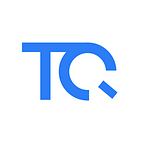We are excited to announce that TQTezos, Nomadic Labs, and Cryptium Labs recently participated in the AZTEC Protocol’s Multi-Party Computation (MPC) ceremony, Ignition, using an air gapped computer which has since ceased to be.
Representatives from each team gathered in New York City during the week of TQuorum to run AZTEC’s MPC software in preparation to be the second in a 200-participant global relay which starts later this week. TQ Tezos, Nomadic Labs and Cryptium Labs have joined Vitalik Buterin as early participants in the relay.
The AZTEC protocol
The AZTEC Protocol is a private transaction network designed for institutional-grade financial privacy to mint, redeem, send and swap assets through the AZTEC Cryptography Engine, by which the network verifies the integrity of a zero-knowledge transaction.
As described in this blog post, the AZTEC ceremony is based on a Codex of points signed via Boneh-Boyen signatures (a specific type of mathematical relationship). In order for a transaction to be accepted by the ACE, the user must prove the transaction was generated using the Codex.
The Codex is created in two stages:
1. During the Relay stage, participants hand off a transcript of points with mathematical relationships to one another. Each participant adds their own random number to the transcript, and then must destroy the number, before handing it off. Once all participants have completed, the Final Transcript is ready.
2. Post Processing is then used by AZTEC Protocol to build the final Codex, constructed from the points created during the Relay phase.
The Relay phase is essential to the integrity of the protocol. During this phase, participants build a large number of points with mathematical relationships to one another (called monomial points), by passing around a transcript. Each participant needs to roll their own random number into the transcript (which cannot then be extracted from the new transcript). They must then destroy that number.
As long as just one of the 200 participants follows the rules of the ceremony, the setup is secure.
The Final Transcript will be an important community asset, and will be used to secure many future cryptosystems beyond AZTEC 1.0 — one such example is PLONK, the efficient universal SNARK built by AZTEC Protocol and Protocol Labs, which enables fully private smart contracts on public networks.
For a basic, accessible explanation of the ceremony, follow this link. For a more detailed technical explanation, including its mathematical basis, follow this link.
Running the Ignition software
TQ Tezos, Nomadic Labs, and Cryptium Labs prepared to participate in the Relay stage of Ignition, contributing a random number to the transcript.
After running the MPC software, the computer, and the random number generated, was dutifully destroyed.
All three participating teams were honored to be part of kick-starting the AZTEC Protocol by contributing to the Codex. As described below, usable privacy on public blockchains, particularly for use around financial assets, has been a key priority of the Tezos project for quite some time.
Privacy on Tezos
Privacy has long been a major limitation of public blockchains and thus a top priority of the Tezos ecosystem. Multiple core teams have been working to facilitate zk-snarks based functionality in Tezos for quite some time.
From Nomadic Labs, Marc Beaunardeau and Marco Stronati are working on integrating ZCash’s Sapling circuit into Tezos as a Michelson instruction which allows the creation of shielded pools of fungible assets (e.g. for Tez or for example, a sub-token like FA 1.2)
Check out Marco’s presentation from TQuorum: Berlin and Marc’s demo of using Sapling on Tezos from the TQuorum Global Summit just a few weeks ago.
As discussed in the TQuorum: Berlin presentation, Nomadic plans to propose adding this instruction to Michelson in an upcoming protocol amendment proposal.
Cryptium Labs has also presented on their plans to bring zk-snarks to Tezos with a multi-asset shielded pool as a milestone on Cryptium Labs’ proposed core development roadmap for Tezos presented by Adrian Brink at TQuorum last month.
Christopher Goes, also from Cryptium, presented about different flavors of zero knowledge at TQuorum: Berlin, offering applications for decentralized exchanges and other practical examples.
Join Ignition & follow along as the ceremony goes live!
There’s still time to join the effort! If you are a community member interested in being a part of ignition, sign up here.
The ceremony will be broadcast live later this month at https://ignition.aztecprotocol.com.
